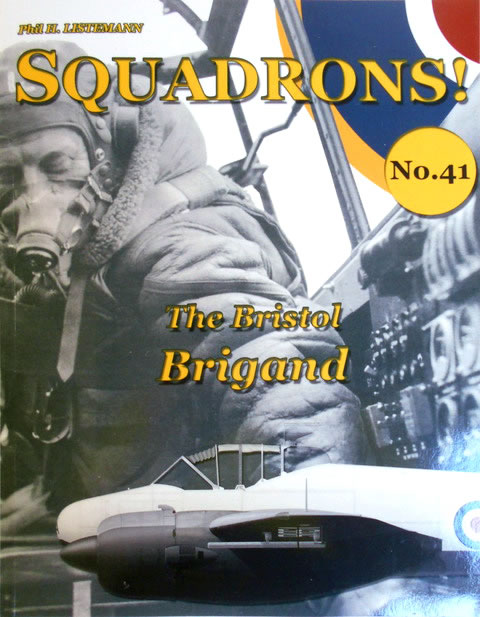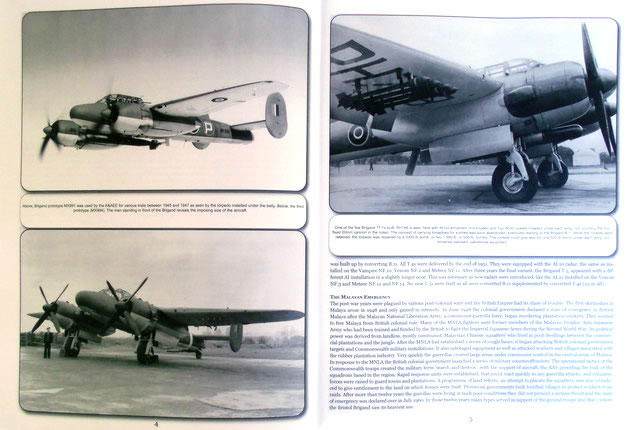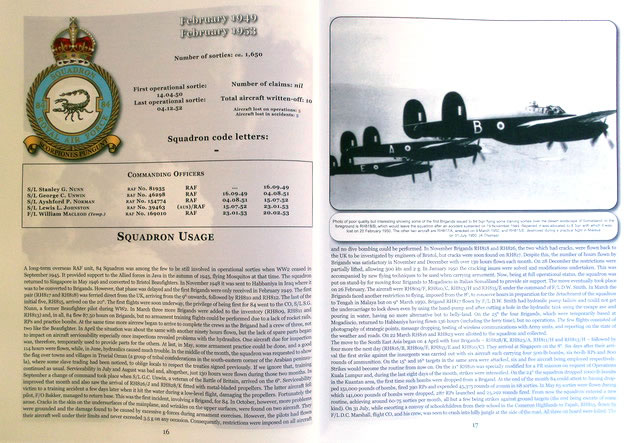Squadrons!
Number 41
The Bristol Brigand

Philedition
S u m m a r y : |
Catalogue Number, Description and ISBN: |
Squadrons No. 41
The Bristol Brigand
by
Phil H. Listeman
Illustrations by Gaetan Marie
ISBN: 979-1096490-66-0 |
Contents & Media: |
Soft-cover format, 48 pages. |
Price: |
Available online from www.raf-in-combat.com and selected retailers |
Review Type: |
First Look |
Advantages: |
Useful to both modellers and those interested in the history of aircraft and its involvement in the Malayan Campaign, good set of well reproduced personal photos and very nice coloured profiles.. |
Disadvantages: |
None noted. |
Conclusion: |
This is an interesting and valuable volume for both the historian and modeller that adds another chapter to the literature on the Brigand. Recommended |
Reviewed by Graham Carter

This is a 46-page case-bound A4 ‘bookazine’ with a glossy card cover and is the latest in this long series of editions covering specific squadrons using a variety of Allied fighters and light bombers during WWII. It contains 43 pages of information on semi-matte paper and 3 more that are either blank or advertise other volumes.

This volume covers the RAF use of this aeroplane, no other country used it, a plane that was produced in limited numbers but which had an important role in the Malayan ‘Emergency’ of the 1949-53 period and in the Aden area as well. It was produced as a torpedo bomber replacement fro the Beaufighter but ended up largely as a rocket-equipped ground attack and light bombing aircraft. It was also produced as a trainer and small numbers were built as communication/ trainers ( Buckmaster), as a radar trainer for the Vampire and Venom (Brigand T4 and T5 with a longer nose), a Met a/c ( the Met.3) and as a bomber (Buckingham). Some 98 examples were completed.

The squadrons that used this aircraft were No.8, No. 45, and No.84. It was also used in Meteorological flights and in No.228 and 238 OCUs. It had a pretty disastrous record with numerous accidents and combat losses, all of which are sadly covered in this volume. No wonder it only served for a short period from 1948, the armed version largely gone by 1954 and the trainers by 1958.

The main part of the volume is concerned with these squadrons. Each is treated with a variable coverage looking at a their actions, bases, and personnel. Each is accompanied by tables of battle claims, and aircraft losses due to action or accidents, interspersed with useful photos of aircraft and personnel from private sources, all in B&W. Quality is a little variable depending upon the originals, but are interesting in that they often show casual scenes around the planes. There follows an ‘In Memoriam’ table of details of the pilots and crew who lost their lives while flying with these squadrons. A short section covers the Buckmaster.

The volume then concludes with six excellent colour profiles of representative aircraft from the squadrons by Gaetan Marie of BravoBravo Aviation. Brigands were painted either Medium Sea Grey or white over black with prominent squadron codes and badges that add a bit of colour to the airframes.
This is an interesting and valuable volume for both the historian and modeller that adds another chapter to the literature on the Brigand. Recommended.
Thanks to Phil Listemann for the review sample.
Review Text Copyright © 2021 by Graham Carter
This Page Created on 25 March, 2021
Last updated
25 March, 2021
Back to HyperScale Main Page
Back to Reviews Page

|
